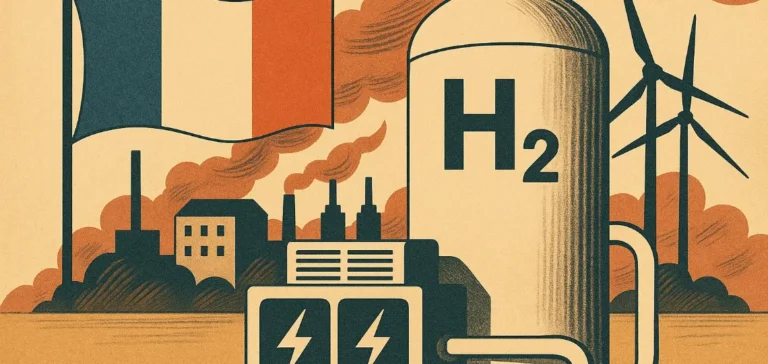Public support in France for the decarbonised hydrogen sector, seen as essential to decarbonising industry and diversifying energy uses, remains well below stated commitments. In its latest report, the Cour des comptes notes a significant gap between government targets and the actual funds mobilised since 2020. Of the €9bn ($9.72bn) announced for the full hydrogen value chain, only €0.9bn ($0.97bn) had been disbursed over four years, Cour des comptes reported in April 2025.
National targets ambitious but difficult to reach
The second National Hydrogen Strategy (SNH2), published in April 2025, sets a target of 4.5 gigawatts of electrolysis capacity by 2030, compared to the initial 6.5 GW goal set in 2020. This figure is expected to rise to 8 GW by 2035. However, only 0.5 GW of projects are currently fully secured. In an optimistic scenario, capacity could reach 3.1 GW by 2030, still below the target.
The decarbonisation roadmap under the draft National Low-Carbon Strategy (SNBC), which forecasts hydrogen use at 1 million tonnes per year in 2035 and 4.4 million tonnes by 2050, is based on assumptions that the Cour considers overly optimistic compared with revised projections from independent bodies such as the International Energy Agency (IEA) and the French Alternative Energies and Atomic Energy Commission (CEA).
Partial and delayed public support
Of the €9bn ($9.72bn) announced, €2bn ($2.16bn) is earmarked for research and development, €1.5bn ($1.62bn) for industrialisation, €1.4bn ($1.51bn) for electrolyser deployment, and at least €4bn ($4.32bn) for production and usage. However, these figures do not include indirect support mechanisms such as electricity excise exemptions, carbon offset schemes or reduced electricity grid tariffs (TURPE). Including these, total public support could range between €9.5bn ($10.27bn) and €13.0bn ($14.07bn).
The delay in disbursements is partly due to the late launch of the first production support tender in December 2024, although it was originally planned as early as 2020. This postponement has affected project developers’ visibility.
Budget allocation raises questions
The Cour also noted that a significant share of committed funds – around 46 % – has been allocated to road transport, even though this segment is now considered less promising compared to battery technologies. This allocation raises concerns about the coherence of the public strategy in a constrained fiscal environment.
Electrolytic hydrogen production remains, according to the report, significantly more expensive than steam methane reforming. Between 2031 and 2035, additional costs could range from €1.5bn ($1.62bn) to €4.1bn ($4.44bn) annually, rising to between €5.5bn ($5.95bn) and €11.0bn ($11.89bn) annually between 2041 and 2045 if no substantial technological improvements occur.
The Cour recommends revising production and consumption trajectories based on more credible scenarios to ensure the sustainable mobilisation of public resources.






















